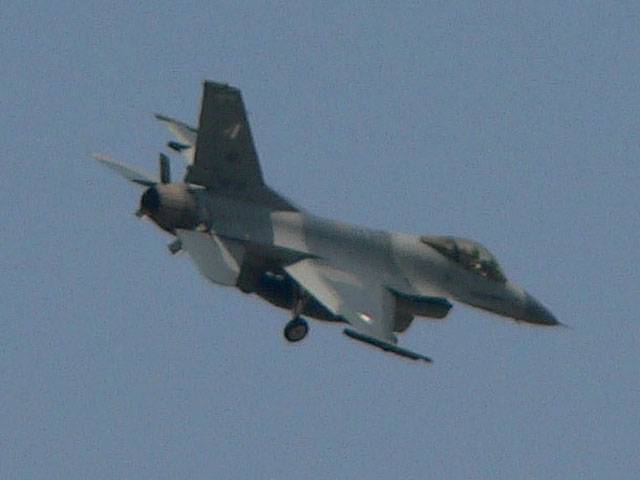WASHINGTON - Two Pakistan Air Force F-16 training simulators are to be modernised with SimuSphere HD-9 visual system displays from L-3 Link Simulation & Training of Texas, the premier company for aviation simulation, according to a report.
The contract, a modification to an existing award, was given to L-3 Link by the US Air Force.
SimuSphere HD-9 features enhanced, realistic tactical training through the use of high-definition databases, image generators and the SimuSphere HD-9 visual display. Through programming, it will also simulate geographically specific environment scenarios.
“This award demonstrates the value that SimuSphere HD-9 will bring to military fast jet training,” said L-3 Link President Leonard Genna. “SimuSphere HD-9, combined with the trainers’ overall HD World capabilities, will allow Pakistan Air Force F-16 pilots to gain training credit equivalent to live training.”
L-3 Link said the upgraded F-16 Block 52 aircrew training devices will also feature inclusion of the company’s Joint Helmet Mounted Cueing System.
The systems will be delivered to Pakistan and installed next year, the company said.
Meanwhile, the reliability of Pentagon weapons systems, including the high-flying Global Hawk reconnaissance drone and MQ-9 Reaper, remains a serious problem, according to a report released by the Defence Department.
Defence officials have a standard procedure for testing a weapons system’s reliability, roughly defined as the ability to continue operating effectively without any major changes or upgrades, the Washington Post said, citing the report.
The standard used to require that weapons systems were built with 30 per cent reliability, meaning there was, at most, a 70 per cent chance that replacements or updated elements would be needed after the systems had entered into operational use. Contractors’ adherence to reliability standards is now voluntary, in part because reliability is seen as so difficult to predict.
According to the Defence Department’s Operational Test and Evaluation unit (DTO&E), only six of 11 Army programmes that faced testing by the agency met their reliability thresholds. Among those that “did not do well” were unmanned systems and communications networks, even though the Army had stipulated in engineering and manufacturing development contracts that those programs should meet an early reliability test threshold. The Navy, which established a high-level director of reliability and maintainability and several other working groups to address reliability issues, had 17 of 27 systems meet their thresholds. The most reliable systems were aircraft and submarines, but “ships and software-intensive systems” did not fare as well. Among those that failed to meet reliability thresholds: the billion-dollar LPD-17, the new amphibious transport docks that carry helicopters, landing craft and Marines for expeditionary missions.
The Air Force had the worst record for reliability, with only three of 11 systems tested by DOT&E meeting the reliability threshold. The Air Force has produced a guidebook to identify risks and had courses on reliability built into levels of its acquisition and test personnel.
The director of DOT&E, J Michael Gilmore, said that, of 52 reports on systems’ effectiveness, suitability and reliability sent to Congress over the past five years, 36 were found to be suitable, while only 26 met their reliability threshold. None of the 52 was ever cancelled, he said.
Saturday, April 20, 2024
Upgrade set for two PAF F-16 simulators

8:27 AM | April 19, 2024
8:09 AM | April 19, 2024
Pak economy improving, funds will be provided on request: IMF
9:57 PM | April 19, 2024
Minister advocates for IT growth with public-private collaboration
9:57 PM | April 19, 2024
Judges' letter: IHC seeks suggestions from all judges
9:55 PM | April 19, 2024
Formula 1 returns to China for Round 5
9:05 PM | April 19, 2024
Germany head coach Julian Nagelsmann extends contract till 2026 World Cup
9:00 PM | April 19, 2024
A Tense Neighbourhood
April 19, 2024
Dubai Underwater
April 19, 2024
X Debate Continues
April 19, 2024
Hepatitis Challenge
April 18, 2024
IMF Predictions
April 18, 2024
Kite tragedy
April 19, 2024
Discipline dilemma
April 19, 2024
Urgent plea
April 19, 2024
Justice denied
April 18, 2024
AI dilemmas unveiled
April 18, 2024
ePaper - Nawaiwaqt
Advertisement
Nawaiwaqt Group | Copyright © 2024





